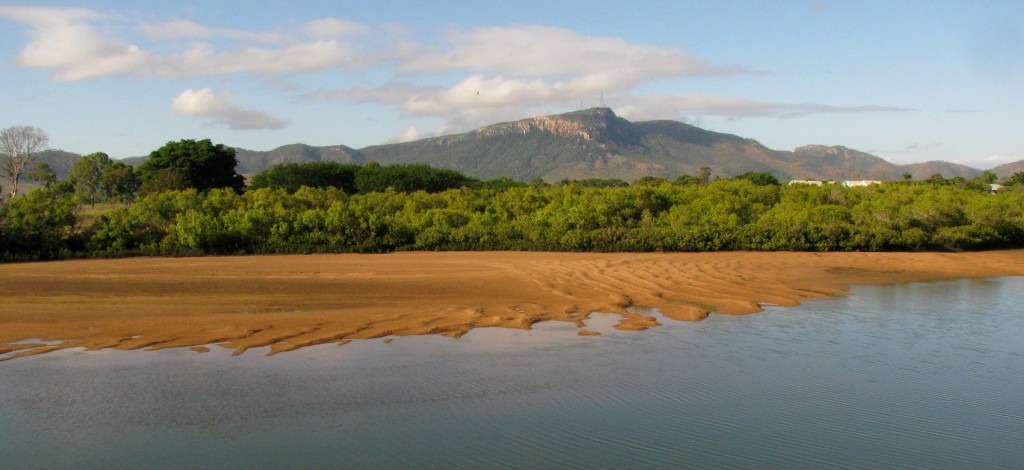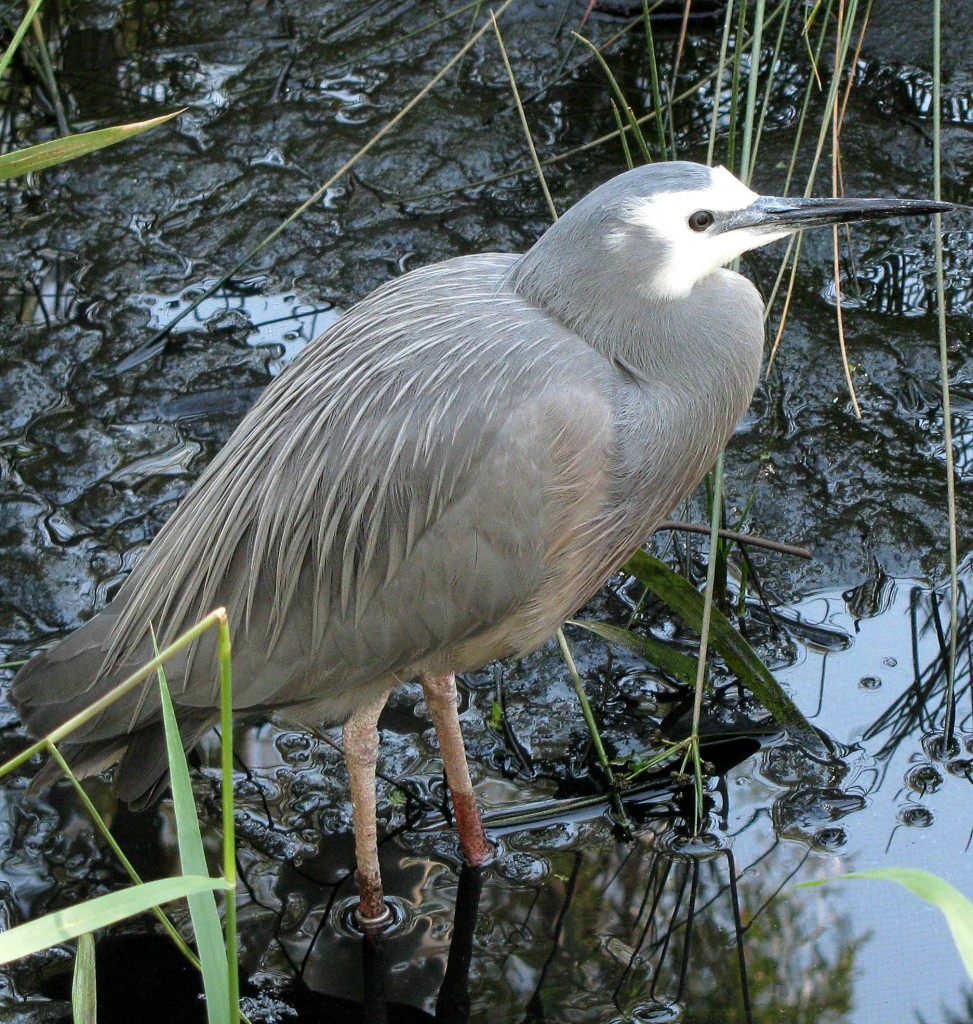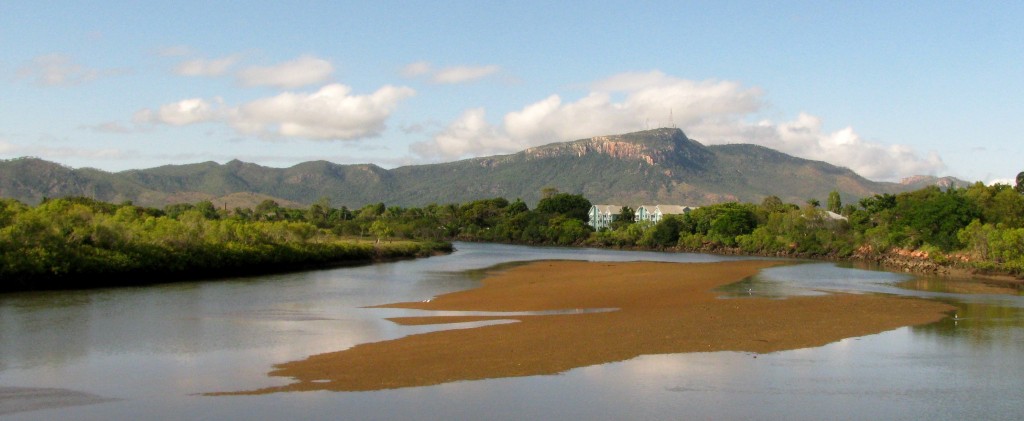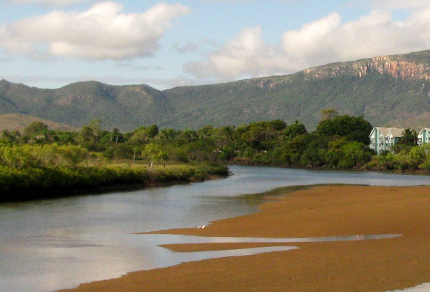
Ross River, Townsville, Queensland, with Mount Stuart in Background (© Magi Nams)
Within Townsville, the Ross River curves and twists like a serpent seeking the ocean. Its edges are bordered with the lush green of the river parkway, and its waters neatly divided into fresh and brackish water by the concrete barrier of Aplin’s Weir, located 10 kilometres upstream from the river’s mouth. Above the weir, the river lies placid outside of the torrential rainfalls of the Wet, its shoreline decorated with lily pads and lotus lilies, its dark waters plied by needle-like sculls of members of the rowing club. Below the weir, the river belongs to the ocean, its volume and currents controlled by the ebb and flow of the tides.

White-faced Heron (© Vilis Nams)
This morning, early, on one of the lowest tides I’ve seen on the river, fish skittered and leapt in shallow water hemmed in by sand bars and shores. Predatory birds stalked the river shoreline and hunted prey from exposed sand and rock – a great egret frozen into deadly stillness, a little black cormorant diving and splashing, a white-faced heron nearly invisible against a backdrop of grey rock, a little egret stepping through shallow water at the edge of a sandbar, its head repeatedly bobbing down as it snatched food from the river. Caspian terns and a gull-billed tern floated gracefully above the waterway, the Caspians wheeling and plunging in hunting dives and bullying two whimbrels off a sandbar. Perhaps having satisfied their hunger, masked lapwings and a common sandpiper preened on open sand near the water’s edge, and a little pied cormorant hung out its wings to dry. The more I looked, the more I saw, spotting another hunter – a striated heron – as it flushed from shoreline mud.
When the tide is in, the river flows deep and strong, covering the roots of mangroves growing along its shores and submerging the rock ledges and sandbars so baldly exposed this morning. It becomes a different creature then, a renewing, cloaking entity totally unlike this lean, stripped edition with its sand rippled like muscle and a coterie of avian hunters riding its back.

Low Tide on Ross River, Townsville, Queensland (© Magi Nams)

Male Red-backed Fairy-wren beside Ross River, Townsville (© Magi Nams)
Today’s birds: olive-backed oriole, rainbow lorikeets, mynas, figbirds, magpie-larks, white-gaped honeyeater, blue-winged kookaburra, pied imperial-pigeon, Torresian crows, rock doves, mistletoebird, peaceful doves, spangled drongo, rainbow bee-eaters, common koels, channel-billed cuckoo, Australian white ibises, brown honeyeaters, brush cuckoo, house sparrows, pheasant coucal, welcome swallows, masked lapwings, common sandpiper, striated heron, little pied cormorant, rufous-throated honeyeater, great egret, little black cormorant, Caspian terns, red-backed fairy-wrens, blue-faced honeyeaters, yellow honeyeater, whimbrels, gull-billed tern, little egret, galahs.


